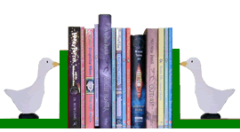Metadata is one of the buzz words in book marketing, but what does it mean? The answer’s simple – metadata is the information (or data) about your book that you provide when you register its ISBN or publish through Createspace, KDP, Draft2Digital or other similar systems. The amount of information varies a little from one place to another but, amongst other things, it usually includes title, author, publisher, cover picture, description and categories.
Why does metadata matter?
No one in the book trade has the time to read every book published, so bookshops and libraries have always used metadata to help them decide which books to stock. Nowadays metadata is extra important because it’s such a powerful aid to shopping on online bookshops. The description and cover provide potential readers with the information they need about the book, while the categories help your book show up on bookshop searches and specialised bestseller lists. .
Is it worth the effort to get the metadata right?
Definitely. In 2012, research by Nielsen (who handle UK ISBNs) showed that titles with complete metadata had average sales 98% higher than those without, and those with a cover image had average sales 268% higher than those without one. Of course, it’s possible that the improved sales weren’t entirely due to the improved metadata – maybe the books were also better written and had better covers. But, if you want to give your book the best possible chance, make sure you get your metadata right.
What are categories?
They are a way of telling bookshops what the book is about. There are two main category systems – BIC (the UK system) and BISAC (the US system). Amazon categories are similar to BISAC but not exactly the same. Regardless of which system you are asked to use, try to choose the lowest level category you can. So it’s better to use fiction/romance/historical/Victorian than just fiction or fiction/romance. That way you’ll show up on more searches.
It’s often possible to change your category choices later and, with Amazon in particular, switching from a category with lots of competition to a less popular one can improve your chances of showing up on specialised bestseller and popularity lists.
What sort of description should I write?
The description is going to show up on internet bookshops so target it at potential readers. Aim to give them enough information to tempt them to buy the book or download a sample without telling them so much that you give away all the plot twists. If you’re not sure what to say, have a look at the descriptions for popular books in the same genre.
What’s enhanced metadata?
When you register an ISBN in the UK, you can include the basic information about the book and the cover picture for free. However, you have to pay an annual fee to add what Nielsen calls enhanced metadata – a short description, a long description, reviews and information about the author. If you’re mainly selling through Amazon, this probably isn’t cost effective as you can put your own information on there anyway.
Diana Kimpton
